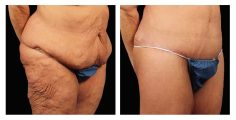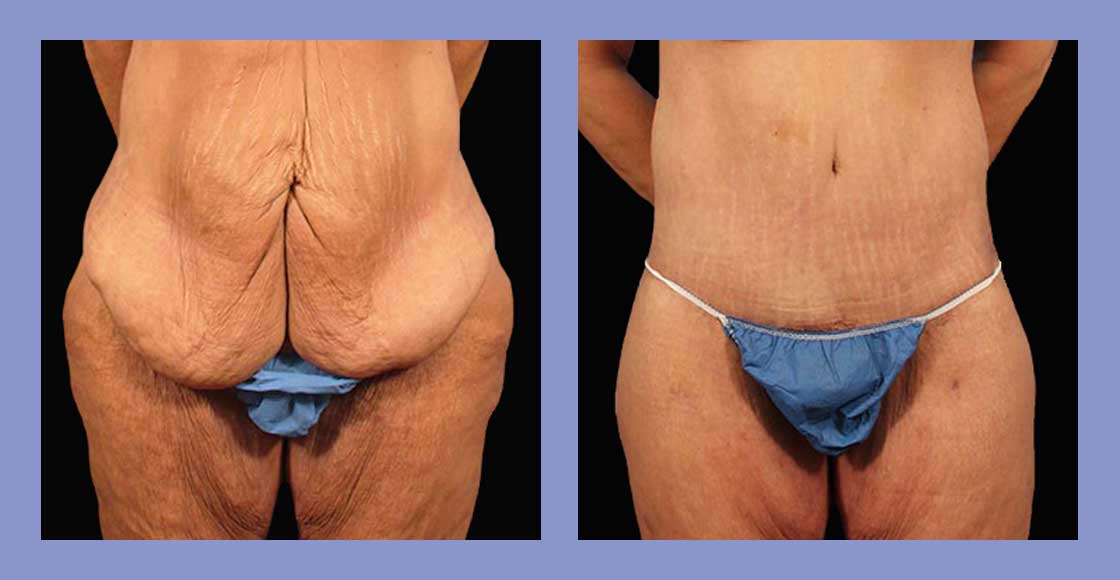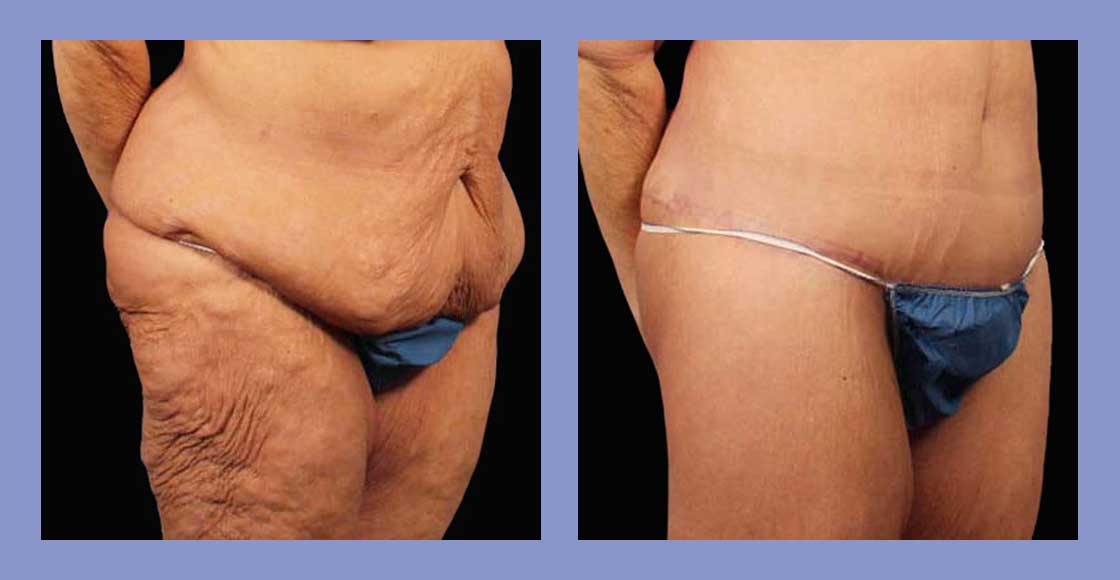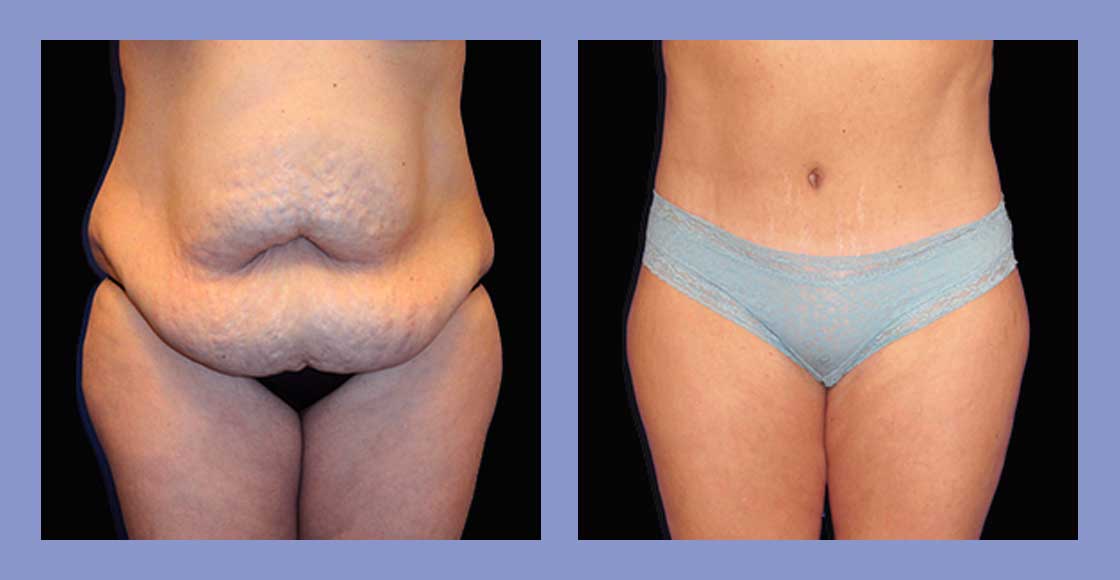— Verve Patient

Body Lift
Quick Links
What Is a Body Lift?
Who Is a Good Candidate?
- You have lost a large amount of weight through bariatric surgery (such as gastric bypass or lap band surgery), diet and exercise or post pregnancy.
- You have folds of loose/inelastic skin that is resistant to reduction even with diet or exercise.
- Patients who are good candidates also are those who have a
- Desire for a tighter, firmer body.
- Sagging skin following an extreme loss in weight or bariatric surgery.
- Hanging skin following extreme weight loss.
- Discomfort from tucking excess skin into clothing.
- You should be at or close to your ideal weight, with a BMI less than 35.
- You should be at a stable weight for 6 months.
- The best candidates are non-smokers. Smoking increases the chance of complications including impairment in wound healing.
The Procedures
- Body lifts (Belt Lipectomy) involve lifting multiple areas of the body.
- Our very skilled surgeon, Dr. Anshu Gupta, uses the most advanced techniques in body lifts to improve body appearance including recontouring of arms, thighs, buttocks, tummy tuck, back rolls and any other areas requiring attention. It removes skin and fat and the remaining skin is tightened.
- The entire procedure may be done in one shot or may occur over several days. Staging will be done if it will improve results and minimize risks.
- Although the results of a body lift are instant, the final results can only be fully appreciated once the swelling has faded.
The Incisions
The incision for a body lift will travel around your circumference along your low hips and just above the buttocks.
Procedure Video
[Title screen for Procedure – Body Lift]
[Dr. Gupta speaking to the camera like an interview]
A body lift procedure, sometimes also known as 360 degree abdominoplasty, is a procedure that is designed to remove the excess skin and excess fat from all around the body.
[Illustration with arrows on patient’s body showing the tummy tuck and lower back with liposuction]
It includes tummy tuck in the front but also removes excess skin in the lower back and we remove the excess fat with liposuction and can lift up the buttock area.
[Patient looking at herself in the mirror]
Most of the time a body lift is required for weight loss patients.
[Dr. Gupta speaking to the camera like an interview]
Body has excess skin in multiple areas of the body and a lot of these corrections can be performed with a single procedure called body lift.
[Dr. Gupta performing a body lift in the operating room]
A body lift procedure does take a little bit of commitment on patient’s part. The procedure is five to six hours long. It’s very safe procedure
[Dr. Gupta speaking to the camera like an interview]
and in most cases you’ll be able to go home the same day and some other cases we would want you to stay overnight for observation. The scar for body lift is typically a circular scar around the waistline. We pay special attention to make sure we conceal the scar in the underwear line. Typical recovery after body lift surgery is about four weeks long. First week can be a little bit tough, but as the days go by, you’ll feel better every day and we will be with you every step of the way.
[Patient looking at herself in the mirror]
Patients going through body lift procedures are more self-confident. They don’t have to be self-conscious about the excess skin that they carry.
[Dr. Gupta speaking to the camera like an interview]
It sort of completes their journey that they started with the weight loss procedure. It is more comfortable, they love it and I love doing it.
[Closing title screen with Verve Plastic Surgery logo]
[Call today (760) 436-7600]
FAQs
- Dimpled or uneven soft tissue
- Lax, loose skin
- Excess fat and tissue
- Sagging body contours
- Stretch marks
- Abdominal bulge
- Back rolls
- Extra hanging thighs and lower buttock
- Flat appearance of upper part of the buttock
Some of the possible risks of a body lift include, but are not limited to, bleeding, infection, fluid accumulation, delayed or poor healing, skin loss, blood clots, excessive or widened scars, numbness and other changes in skin sensation and irregular or asymmetric contour or scars. In addition, any surgery carries risks associated with anesthesia.
Most patients return to work 6-week recovery after their surgery. It will depend on the requirements of your job. If you have a physically demanding job, 6 weeks is recommended.
No. However there is a BMI requirement of less than 35. This is in order to reduce your risk of complications and ensure you have a safe recovery. Enter your height and weight below to calculate your current BMI.
Request an Appointment
Call (760) 436-7600 or fill out the form to schedule an appointment to discuss your needs in detail


